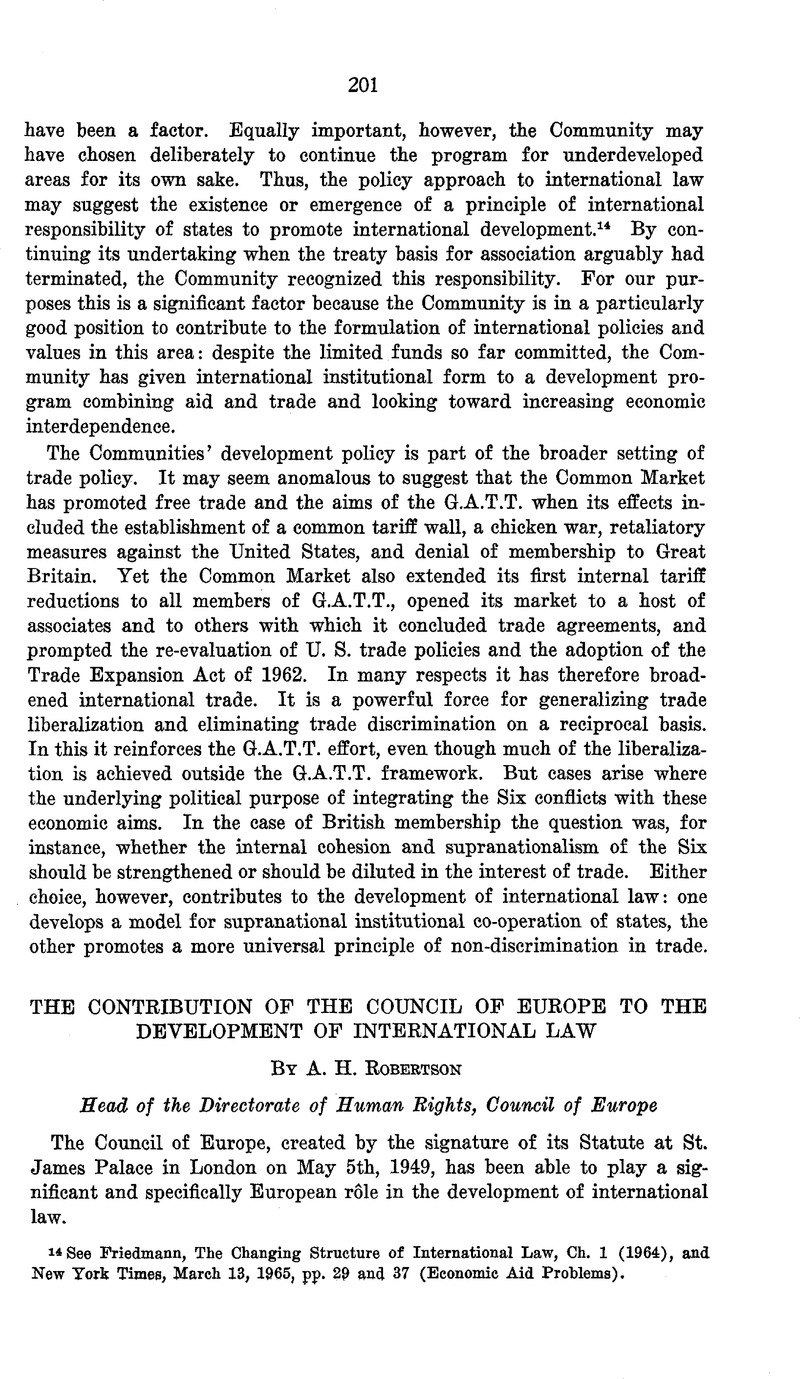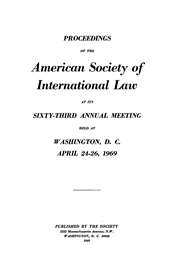No CrossRef data available.
Article contents
The Contribution of the Council of Europe to the Development of International Law
Published online by Cambridge University Press: 27 February 2017
Abstract

- Type
- Fourth Session
- Information
- Proceedings of the American Society of International Law at its annual meeting (1921-1969) , Volume 59 , 1965 , pp. 201 - 209
- Copyright
- Copyright © American Society of International Law 1965
References
1 As from May 3, 1965, the membership was increased to 18 by the accession of Malta.
2 This Conference has so far held three sessions, in July, 1961 (Paris), October, 1962 (Rome) and May, 1964 (Dublin). A somewhat similar organ is the European Conference of Ministers of Education, which is also serviced by the Council of Europe and has held four sessions since 1960.
3 The text of the Convention and Protocols, the more important decisions of the Commission and the Court are published in the annual Yearbook of the Convention on Human Bights. See also Gordon Weil, The European Convention on Human Bights (Leyden, 1963), and A. H. Bobertson, Human Bights in Europe (Manchester, 1963).
4 Austria, Belgium, Cyprus, Denmark, Fed. Bep. of Germany, Greece, Iceland, Ireland, Italy, Luxembourg, Netherlands, Norway, Sweden, Turkey and the United Kingdom.
5 Austria, Belgium, Denmark, Fed. Eep. of Germany, Iceland, Ireland, Luxembourg, Netherlands, Norway and Sweden.
6 Austria, Belgium, Denmark, Fed. Eep. of Germany, Iceland, Ireland, Luxembourg, Netherlands and Norway.
7 See H. Golsong, “The European Convention on Human Eights before Domestic Courts,” 38 Brit. Yr. Bk. Int. Law 445-456 (1962); T. Buergenthal, “The Domestic Status of the European Convention on Human Eights,” Buffalo Law Eeview, 1964, pp. 354-392.
8 The words ordre public are used in French, as there is no exact English equivalent, “public order” and “public policy” having different meanings in English law. It is provided in a Protocol that “the concept of ordre public is to be understood in the wide sense generally accepted in Continental countries.”
9 The Convention entered into force on Feb. 23, 1965, on the deposit of the fifth instrument of ratification, as between Belgium, Denmark, the Fed. Eep. of Germany, Italy and Norway. The matters dealt with in this Convention are closely related to the obligations assumed by the Six in Arts. 52-57 of the Treaty of Borne.
10 Austria, Denmark, Fed. Eep. of Germany, Italy, Luxembourg, Netherlands, Norway, Sweden and the United Kingdom.
11 A new departure is that one of the methods of conciliation envisaged is reference to the European Commission of Human Eights created by the Convention on. Human Rights of Nov. 4, 1950.
12 The text may be found in 5 European Yearbook 347-363. Some of the problems which arose in drafting the convention are discussed in an article by Professor J. P. A. Frangois (who was himself one of the negotiators), “La Convention europ^enne pour le Beglement Pacifique des Differends,” 6 ibid. 54-66. A further discussion of this convention may be found in 6 Int. and Comp. Law Q. 584-585 (1957). See also H. Eolin, “L'Heure de la Conciliation comme mode de reglement pacifique des Litiges,” 3 European Yearbook 3-21.
13 Denmark, Greece, Italy, Norway, Sweden and Turkey.
14 A multilateral Convention on Extradition was adopted by the Seventh International Conference of American States at Montevideo in 1933.
15 Denmark, Greece, Italy and Norway.
16 Not yet entered into force. Eatifled by Greece and Norway.
17 Not yet entered into force. Eatifled by Ireland and the United Kingdom.
18 Entered into force on Jan. 25, 1965. Ratified by Austria and the Fed. Eep. of Germany.
19 Not yet entered into force. Ratified by France.
20 Not yet entered into force.
21 The 19 articles in P a r t I I of the Charter contain 68 numbered paragraphs. A state may ratify the Charter if it agrees to be bound by not fewer than 45 paragraphs.
22 Resolution CM (63) 29 of Dee. 13, 1963.
23 Resolution CM (64) 15 of Oct. 31, 1964.
24 Resolution CM (64) 10 of Oct. 6, 1964.


